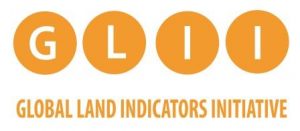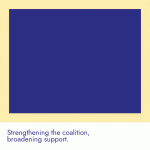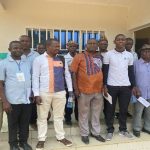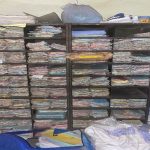
Developing a common framework for tracking progress on land issues.
The need to step up monitoring of land governance issues drove the establishment of the Global Land Indicators Initiative (GLII) in 2012 by Millennium Challenge Corporation, the World Bank, and UN-Habitat. The platform is hosted and facilitated by Land and Global Land Tool Network Unit in UN-Habitat.
GLII is a collaborative and inclusive process for developing Global Land Indicators. GLII partners aim at making global-scale monitoring of land governance a reality by 2021. GLII has now grown to include over 50 institutions around the world ranging from UN Agencies, Inter-governmental Organizations, International Nongovernmental organizations, Academia, Private Sector, Researchers and Training Institutions, and Farmer Organizations.
Regional institutions like Land Policy Initiative (LPI), the UN Statistical Commission for Africa, National Statistical Offices and Regional Statistical Training Centers are strategic partners of GLII. The platform created space that facilitated the global land-community to engage in the post-2015 development agenda, making a major contribution to the decision that saw the inclusion of land target and indicators in the SDGs with the backing of The Global Donor Working Group on Land and other agencies.
The GLII mandate includes:
- Coordinating, convening and facilitating dialogues between land governance and data communities on land monitoring and best practices;
- Developing nationally applicable and globally comparable land indicators and data protocols for land monitoring;
- Raising awareness and facilitating capacity strengthening for land and statistical institutions in land data generation including gender disaggregated data, analysis and reporting, and uptake of new data technologies.
- Promoting the use of evidence-based approach to land monitoring and impact measurement of tenure security measures policy influencing; and use of open land data repositories.
- Research and knowledge management on land monitoring and emerging trends for learning and decision-making.
Other GLII achievements include the development of a set of 15 nationally applicable and global comparable land indicators that go beyond the provisions of land in the SDGs to cover four key areas of land governance: land tenure security for all, land and conflict, land administration services, and sustainable land use management. The platform has also facilitated the development and piloting of methodology and tools for data collection on tenure security in a number of countries and facilitated the developed a Training Curriculum on Methodology for Data Collection and Reporting on Land Indicators fostering global learning and knowledge sharing. Members of this platform continue to explore innovative means of land data collecting, monitoring, and reporting, including steering land and data community consultations for harmonized indicators and methodology for land data generation, linking country to regional and global processes.
The adoption of the 2030 Sustainable Development Agenda in September 2015 increased attention of global land community on the need to strengthen the statistical and data capacity of countries to measure, monitor and report on targets and indicators on land. Global coordination and collaboration with governments, regional bodies like AU-Land Policy Initiative, the private sector, academia and agencies responsible for land indicators in the SDG 1, 5, 11 and 15 is paramount for synergy, uptake of comparable data protocols for monitoring and reporting on land indicators in the SDGs.
The importance of land in urban development and the need to monitor land governance in urban areas is further underscored in the New Urban Agenda endorsed by the UN Member States during the Habitat III Conference in October 2016.
GLII and its partners are set to build stronger national processes for comparable and comprehensive land governance monitoring at scale linked to global and regional frameworks on land governance; the Voluntary Guidelines on the Governance of Tenure (VGGT), SDGs, New Urban Agenda (NUA), African Union Framework and Guidelines on Land Policy in Africa (AU-F&G), and other initiatives. The platform takes forward the implementation of a set of 15 land indicators developed and validated by GLII partners including an a number of indicators included in the SDGs monitoring framework under SDG1, 2, 5, 11,15 and its link to SDG16.
Based on GLII strategic mandate of coordination and convening of land and data communities and other stakeholders, the platform is set to support the efforts of custodian agencies in the development of the methodologies for land indicators in the SDGs and their reclassification efforts to enable immediate country level data collection and reporting to the High Level Political Forum by National Statistical Organisations, and the contribution of other agencies like CSOs and private sector in data processes at country level.
The platform will also strengthen access to information, communication and advocacy on the importance of securing these indicators in the SDGs and its related processes for measuring progress, from a single integrated narrative and coordinated mechanism for their delivery, and links with other frameworks on land governance. GLII will support local, national and regional capacity strengthening initiatives for regular data collection and reporting on land governance issues, building on partners own work and experience; integrate GLII indicators in the monitoring of the SDGs, VGGTs, NUA, AU-F&G and others. GLII will continue to serve as a laboratory for land indicators, methodology and data collection protocols in support of the monitoring of land governance issues at all levels.
- GLII Flyer
- GLII Indicators
- GLII Roadmap 2017-2019
- Options for Global Reporting on Land Indicators- GLII Working Paper No. 1
- Conceptual Framework for the Development of Global Land Indicators– GLII working Paper No.2
- Proposed global land indicators: Status report on GLII indicator formulation, disaggregation, data sources and methodology- GLII Working Paper No. 3
- Sourcebook for Operationalisation of Global Land Indicators – GLII Working Paper No. 4
- Training Curriculum Sourcebook: Methodologies for Data Collection and Reporting on Land Indicators, for Data Producers and Users – GLII Working Paper No. 5
- Monitoring Tenure Security, Data Collection Questionnaire Modules and Manual: Cameroon, Nigeria And Kenya -GLII Working paper No 6
- A Multi-Country Capacity Assessment of National Statistical Offices Preparedness to Report on SDG Indicator 1.4.2 -GLII Working Paper No. 7
- Guidelines for Impact Evaluation of Land Tenure and Governance Interventions
- GLII at 10: Partners and stakeholders' meeting report
- Experts Reach Important Consensus on critical ‘Land Indicator’
- Paper presented at the Side event on the challenge of land monitoring in the context of the Framework and Guidelines on Land Policy in Africa and the Sustainable Development Goals : Organized by the Land Policy Initiative and UN-Habitat at the tenth session of the Committee of Directors General of National Statistics Offices and fifth session of the Statistical Commission for Africa (Stat-Com Africa) from 28 November to 2 December 2016 in Abidjan, Côte d’Ivoire.
- Global Donor Working Group on Land: Land Indicator is Critical to Ending Poverty and Must Remain in SDG Goal 1
- International Expert Group Meeting on Land Tenure Security to Develop a Set of Household Survey Questions for monitoring SDG Indicator 1.4.2
- Expert Group Meeting: Using Administrative Data to Monitor SDG land Indicator Proceedings – 6-7 July 2017
- UN High-Level Political Forum (HLPF) Side Event – 10 July 2017 – Final Report
- Expert Group Meeting: Securing Women’s Land Rights in the SDGs
- GLII convenes to celebrate achievements and review progress ten years since its founding
Video: Webinar on land-related Sustainable Development Goals (SDGs), co-hosted by the Columbia Center on Sustainable Investment (CCSI), the Land Portal Foundation, UN SDSN’s Thematic Network on Good Governance of Extractive and Land Resources, the Global Land Tool Network (GLTN), and the Global Land Indicators Initiative (GLII). September 2018







